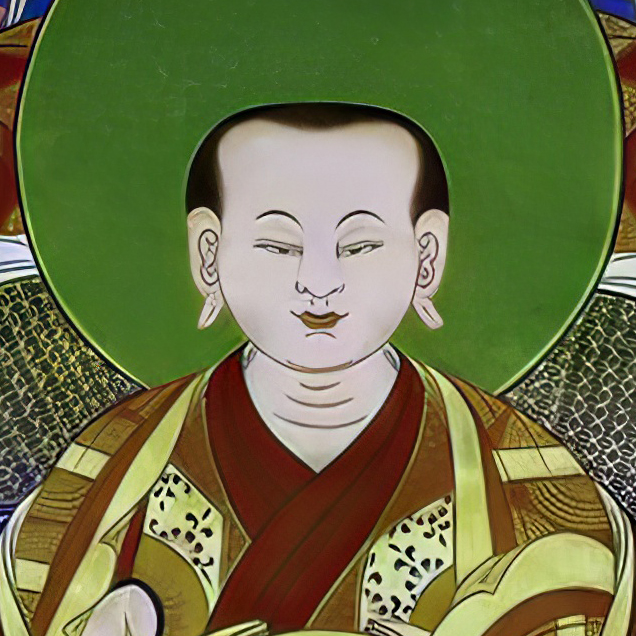Concept of samsara
The concept of samsara
Due to the dualistic mind and attachment, sentient beings create positive, negative, or neutral karma through their body, speech, and mind. These seeds of karma are stored in the Alaya-vijnana, the eighth consciousness of the mind. When the circumstances are suitable, they will emerge and manifest. These karmas are the cause of sentient beings perpetually circling in samsara.
During the day, when we are awake and tranquil, we may see thoughts emerge one after another beyond our control. Even when we are alone with nothing particular happening, we still experience waves of emotions. Sometimes when thinking of someone we feel angry, sometimes when remembering something we feel happy, sometimes anxious, sometimes peaceful…… If our mind is not tranquil, we may not even see the thoughts arising, rather we are busy with doing things and talking. In fact, this is due to the constant working of the mind and the constant emergence of discriminatory thoughts, resulting in actions in body and speech. At night, when we are asleep, in our dreams we still see, hear, and feel just like we do in the daytime, which indicates that our mind is continuously working.
The circumstances after death are similar, because the mind is used to the concept of the truly existing self, with attachment to the body of the five aggregates, as when we are still alive. Therefore after the body dies, the perpetuating mind remains in a certain form of the five aggregates (some forms may not have all the five aggregates). The appearances of the six realms of samsara are a reflection of the different states of our mind.
For example, when a thought of intense hatred arises, we have already produced a feeling in our mind, like the suffering of hell, and a seed of hell is planted. At this moment the result of the hell realm has not yet manifested itself; however, when the body dies, the thought of hatred, together with the accompanying karmic wind, will manifest itself in a hell realm as the five aggregates in a certain form of hell being. When a thought of intense craving arises, like that of the unsatisfied hungry ghosts in the ghost realm, a seed of the hungry ghost realm is planted. The result of the hungry ghost realm has not yet appeared; however, when the body dies the thought of craving, accompanied by the karmic wind, will manifest itself in the hungry ghost realm as the five aggregates in a certain form of ghost.
Jealousy, pride, and ignorance function in a similar manner, so that when the body dies the mind will exist in a certain form of the five aggregates dragged along by the power of karma in the asura, human, and animal realms. The thrust of samsara is the seeds of karma already committed by a person. The number of good and evil thoughts arising everyday are the good and evil seeds we plant in samsara, and when the circumstances ripen, we will experience the happiness and suffering as a result. The perpetual flow of mind will not end automatically, but without an antidote it will continue endlessly. Therefore in the Buddha Dharma, it is often stated: all beings are drifting in samsara, pushed along by the force of karma, with no control over themselves. In the experience of an enlightened one, the outside world and the inner world as perceived at the present moment is illusory, which appears when the results of the seeds of karma ripen.
The same outer circumstances will lead to different experiences due to different karma: a human being sees water as water; a fish sees water as its home; gods see water as heavenly nectar; demi-gods see water as tears; hungry ghosts see water as blood; hell beings see water as melting lava. For a Buddha, who has already purified all karma, it is indescribable Dharmadhatu.
Some people experience the world as a beautiful heaven, while others experience it as a terrifying hell. No matter what kind of inner feelings arise, or whatever the outer circumstances of a human world, hell, heaven, and the hungry ghost realm that appear, they are all illusions resulting from different karma. In fact samsara is an illusion arising from good or evil karma, which we, who have a dualistic mind and cling to true existence, have committed. However, in the experience of ordinary beings, the happiness and pain in samsara and the various outer appearances are real. When we are born as human beings, the happiness and sufferings in this human life are obvious and trouble us all the time. We are very fragile when dealing with pain, a headache is a headache, foot pain is foot pain. We shout out in pain even when a needle pricks us. If we go without one meal, we feel uncomfortably hungry…… The feelings of happiness and suffering will not disappear just because we do not believe in them.
This chapter is part of: Introduction Course - Part 1: Renunciation
